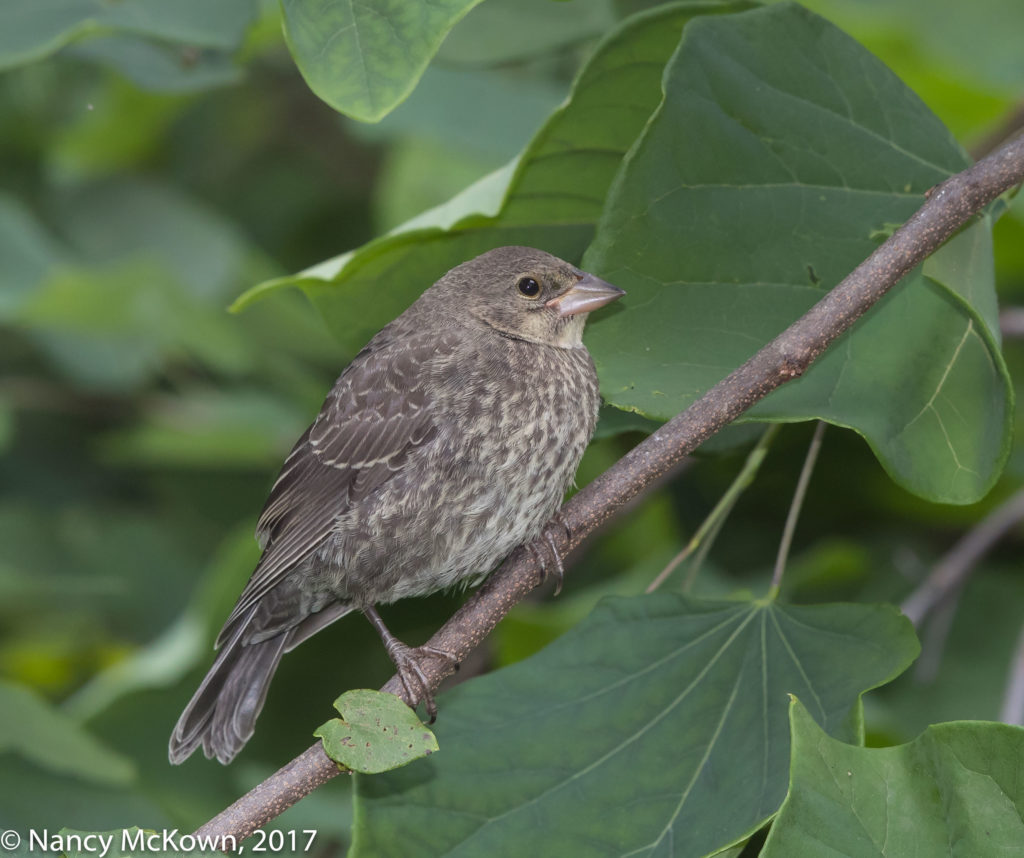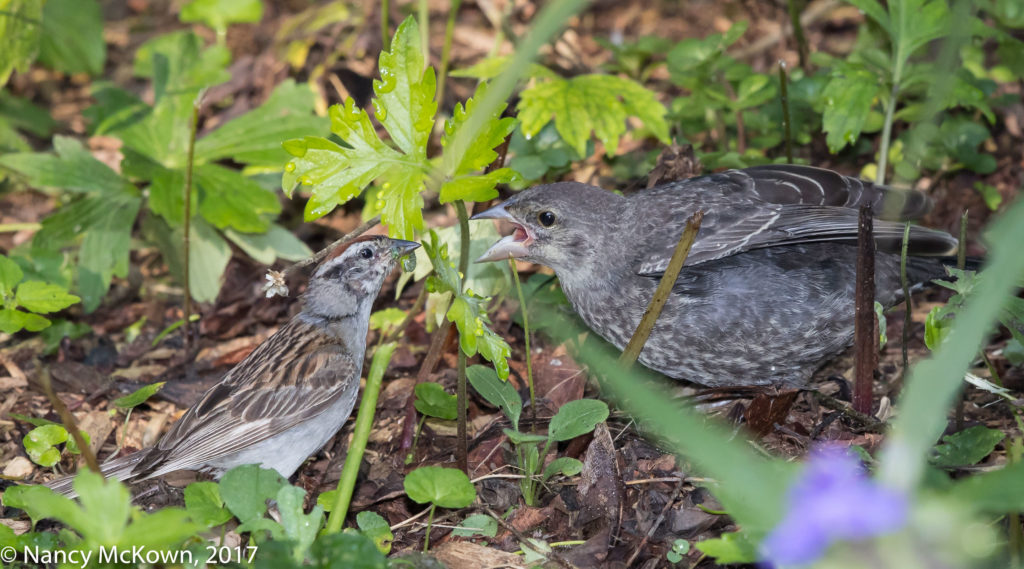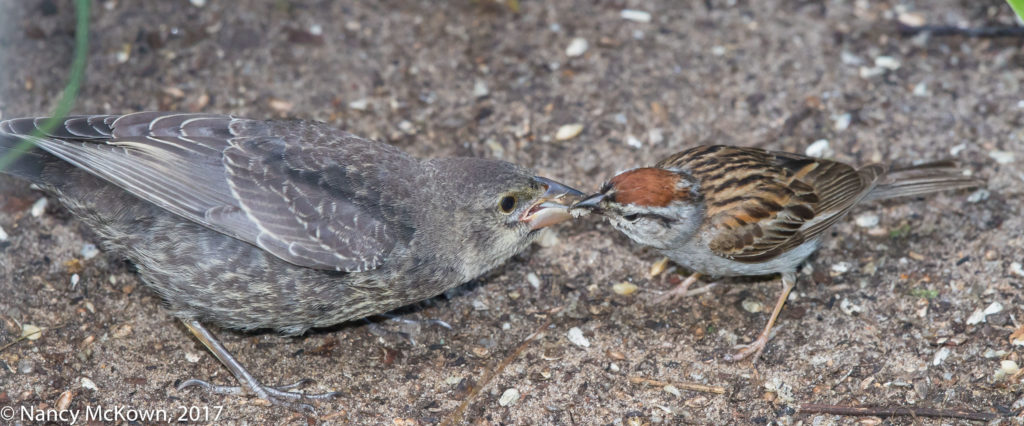The Way of Brood Parasites
Looking around the yard, I see many foraging Brown Headed Cowbirds. A member of the stocky Blackbird family, they feed together in groups, mostly on the ground. It is fascinating to note that even though every single Cowbird out there was nurtured in some other species’ nest, they still hang out together.

Waiting for Surrogate Parent to Feed Her.
ISO1000; f/9; 1/250 Second
Cowbird parents do not build their own nests. Instead they rely on other species to incubate and rear their young. Cowbirds (and all brood parasites) generally receive heaps of distain for abandoning their young. But abandonment implies that they leave and do not intend to return. Apparently, there is some evidence that Cowbird females do not abandon their eggs in a nest and then forget their biological progeny.
These furtive birds have been shown to return to observe their eggs, chicks and fledglings who were surreptitiously deposited in multiple nests. Scientists speculate that Cowbird parents go back to watch their young to determine (for future reference?) if their eggs were successfully placed and perhaps to establish a Cowbird “return to the fold” connection with them during their fledgling days. After all, if no connection is made, how are young Cowbirds to know their own species’ songs and behaviors as opposed to those of the hosting birds.
A Heartache to Watch
It still gives me somewhat of a heart-ache to watch and photograph a small Chipping Sparrow attempting to feed a large and very hungry Cowbird. The insistent demands of this sizable interloper probably kept the female Chipping Sparrow from raising her own brood. NOTE: Her own babies in her nest most likely were starved or pushed out.
Get over it! Time to put my maternal inclinations aside and think about improving my bird photography.
 Chipping Sparrow with Her Cowbird Fledging.
Chipping Sparrow with Her Cowbird Fledging.
Looking Rather Stunned I Think.
ISO 1000; f/9; 1/250 Second
AutoBracketing ISO
Altering exposure parameters using Automatic Exposure Bracketing (AEB) is pretty basic stuff for most photographers. The camera’s automatic bracket functionality quickly and efficiently changes exposure parameters within a sequence of shots with one shutter release. Essentially it varies the degrees of brightness within that sequence according to the specifications you set.
However, you rarely come upon a photographer using AEB to bracket only ISO. Why not? Some thoughts:
- High ISO settings allow the camera’s sensor to be more receptive to ambient light. Low ISO definitely means finer grain… and thus cleaner, sharper images. The higher the ISO, the more you can expect noise, or speckled images. The prevalence and appeal of the noise depends on the quality of the camera’s sensor.

This Image Shows the Size Difference.
Quite a Mismatch!
ISO1000; f/9; 1/250 Second
- The “look” of high ISO grainy images can be appealing, especially if produced with a high-end sensor.
- If the photographer wants depth of field (aperture) and sharpness levels (shutter) settings to remain constant in a low light scenario, bracketing the ISO parameter can help achieve the right balance of brightness and grain.
- But why not adjust exposure to your liking in post processing? Why bother using AEB to bracket ISO…. or any exposure parameter? The most compelling reason I can find to bracket ISO is as follows: Pushing up that exposure slider in post processing to achieve the right exposure balance can seriously harm the “look” of high ISO images. Exposing correctly in camera will give the grain a more consistent look, especially compared with the grain you will see after fixing exposure in post.
Yet another reason to get exposure right in camera instead of relying on post processing to correct your exposure mistakes.